Artists of Practicing Charity Exhibit Give Insights into Creations
Contributed By Marianne Holman Prescott, Church News staff writer
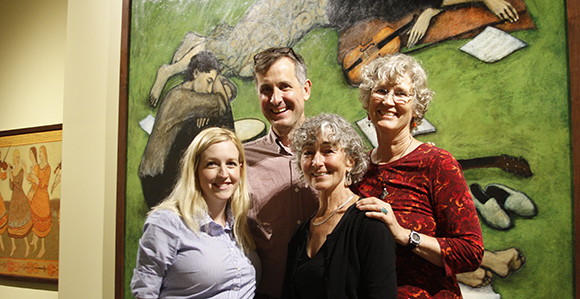
From left, curator of the Practicing Charity exhibit Laura Allred-Hurtado stands with Brian Kershisnik, Kathleen Peterson, and Lee Udall after moderating a discussion with the three artists.
Article Highlights
- Contemporary artists Lee Udall Bennion, Brian Kershisnik, and Kathleen Peterson sat among the paintings as they discussed their work and answered questions.
- Each painting in the exhibit depicts in some way the divine nature and identity of women as daughters of God.
“Practicing charity is something we do every day. And in daily and often mundane ways, we live in celestial ways. That is kind of a summary of the show itself.” —Laura Allred-Hurtado, Church History Museum curator
Related Links
As part of the Practicing Charity: Everyday Daughters of God exhibit now showing at the Church History Museum in Salt Lake City, three artists—whose works are part of the exhibit—gathered for a panel discussion on June 26 to share background and insight to their creations.
Contemporary artists Lee Udall Bennion, Brian Kershisnik, and Kathleen Peterson sat among the paintings in the Practicing Charity gallery and discussed their work and answered questions.
The exhibit, which has been open since the end of February and goes until September 15, features women and the things they do every day—playing, working, studying, helping, dancing, raising children, and making music (see related article). The paintings reflect the title, Practicing Charity, through everyday, simple things.
“Practicing charity is something we do every day,” said curator Laura Allred-Hurtado, who moderated the discussion. “And in daily and often mundane ways, we live in celestial ways. That is kind of a summary of the show itself.”
Sharing how the exhibit came to be, Sister Allred-Hurtado said she didn’t start out with the theme and topic of the exhibit, but that as she was looking over different artists and their artwork, she saw an emerging theme.
“It was kind of [a] messy process,” she said. “You don’t quite set out to say, ‘I am going to do a show on charity and I need some works to illustrate it.’ Rather, … it was ‘I am kind of interested in the way that these artists portray women and what sort of dialogue exists.’ … None of the paintings were created with the show in mind. They preexist the concept of this show.”
She saw a common thread between the three artists’ paintings—an interest in women. To share some insight to their paintings and their personal artistic process, the artists came together in a panel format.
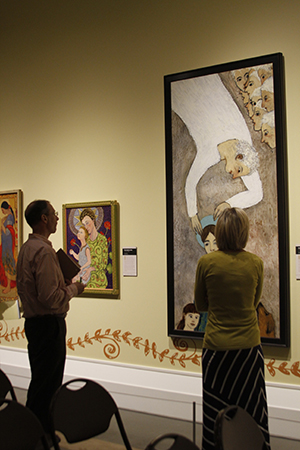
Visitors to the Church History Library look at paintings in the “Practicing Charity: Everyday Daughters of God” exhibit. Photo by Marianne Holman Prescott.
“I paint a lot of just everyday things,” Sister Peterson said. “Everyday things are what we all do. We do have some amazing things once in a while, but most days are filled with doing dishes and vacuuming and sweeping and doing our work.” When asked about one of her paintings depicting women standing in line, she said, “How many of you stand in line? We spend a lot of time standing in line.”
Part of the beauty of the exhibit is seeing interesting paintings full of color and detail depicting the everyday experiences that allow individuals to “practice charity.”
Whether it is a design on one of the women’s dresses or a beautifully carved frame, the artwork turns seemingly mundane activities into beautiful works of art.
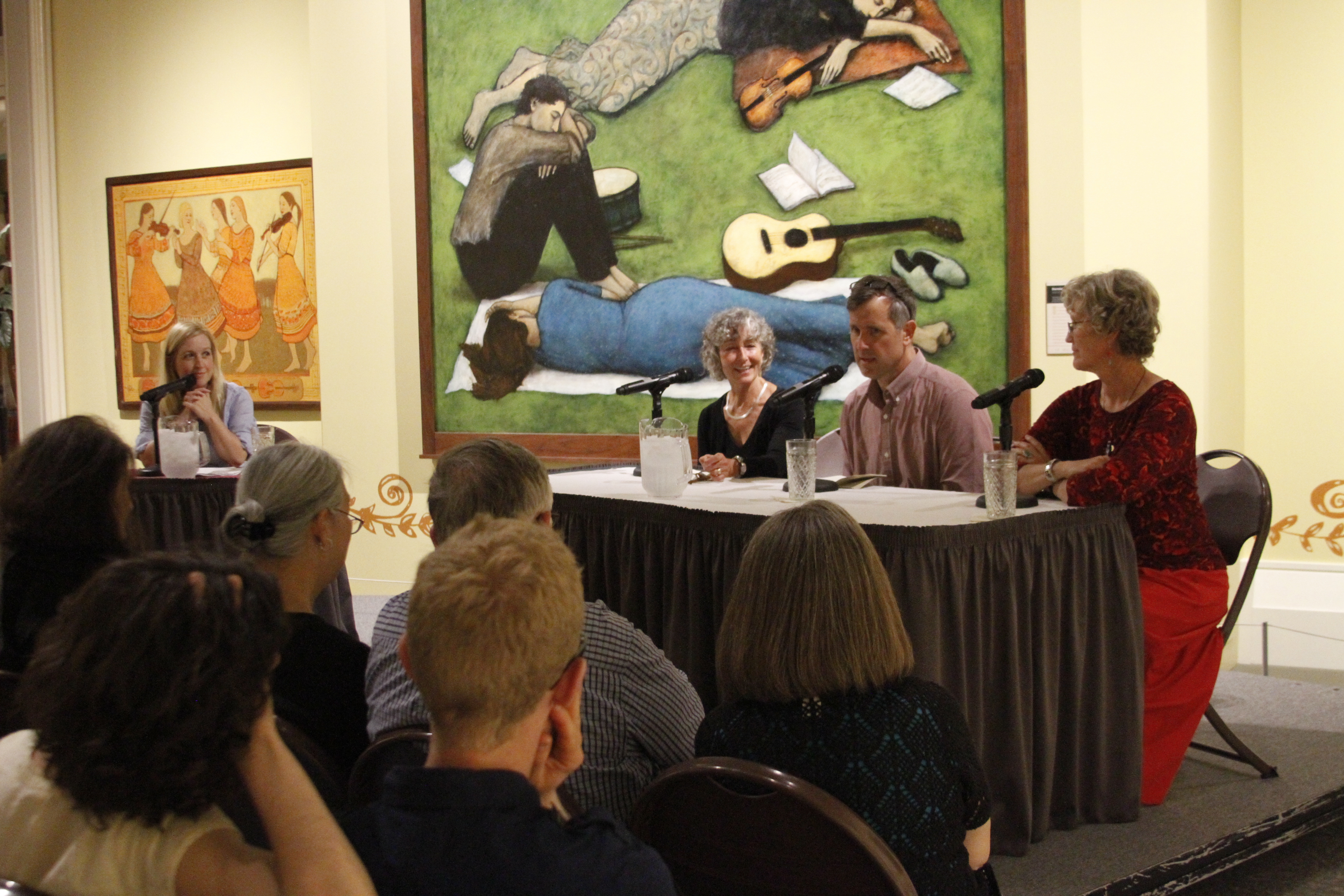
Artists Kathleen Peterson, Brian Kershisnik, and Lee Udall speak about their paintings in the “Practicing Charity: Everyday Daughters of God” exhibit during a lecture on June 26 in the Church History Museum. Photo by Marianne Holman Prescott.
When asked “How does artwork come about for you?” Brother Kershisnik said that inspiration comes as he is working.
“I have found that as an artist you can’t sit down and wait for inspiration,” he said. “The wrong way to go about it is to sit down and try to come up with some brilliant idea—the way to find ideas is to paint and to use your brush.
“There are stories and ideas you want to illuminate, but it seems also that there are ideas that want to be illuminated, and somehow they kind of come together while you are working. A lot of times it feels like play—distorting things out, juxtaposing may or may not work, but just like … the idea for this show, it comes together kind of messy at first.”
Brother Kershisnik spoke of the process he goes through with his paintings as he figures out the composition. He said he works with his ideas until he gets to a point where the painting is right—it finally “starts to breathe.”
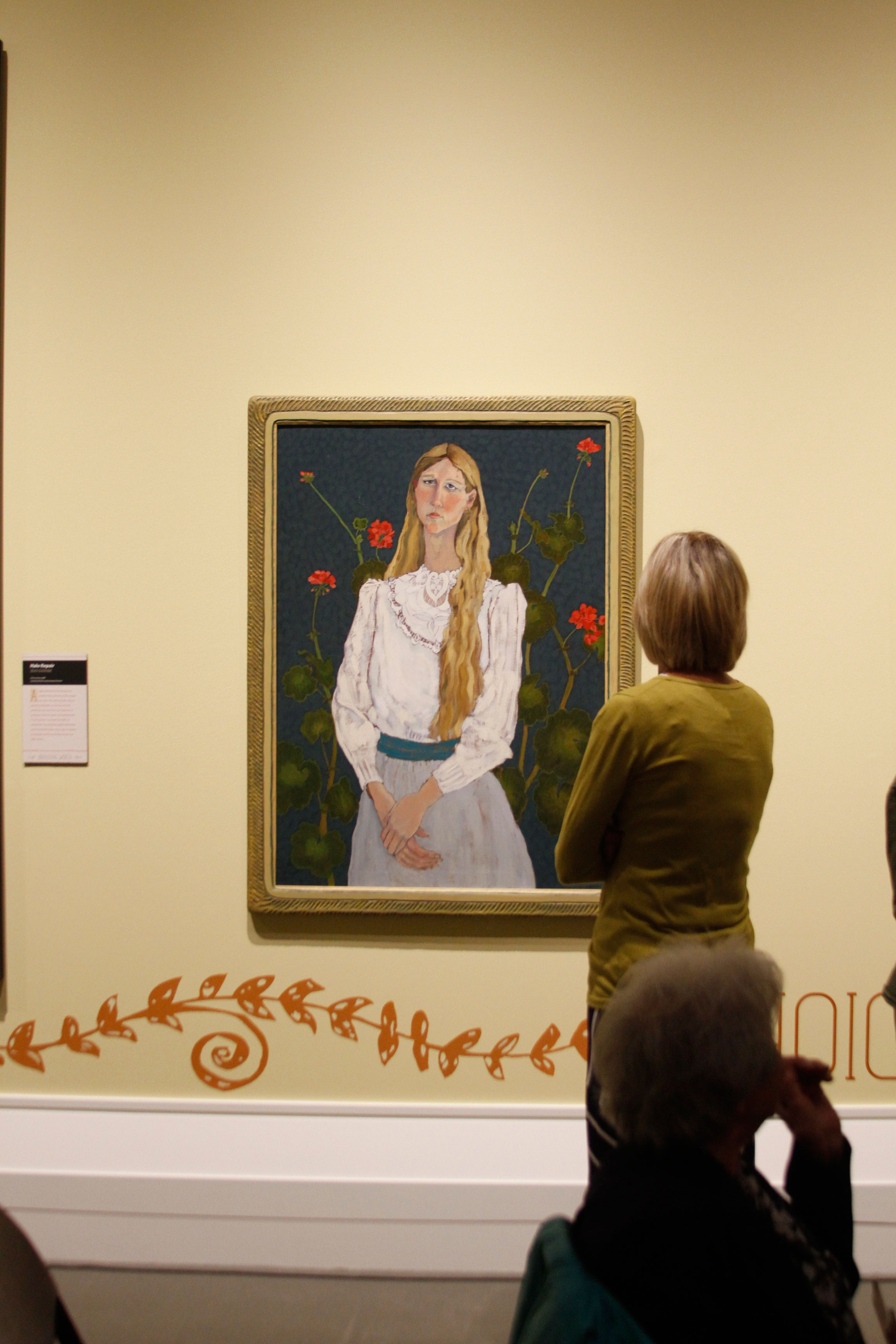
Visitors to the Church History Library look at paintings in the “Practicing Charity: Everyday Daughters of God” exhibit. Photo by Marianne Holman Prescott.
“Until it is right, it is off,” he said. “It might even look nice, but it isn’t right.”
Both Sister Bennion and Sister Peterson agreed that the evolution of a painting is a process, starting with an idea that turns into something greater—oftentimes totally different—than they had anticipated.
Every one of the paintings celebrates womanhood in some way, and each of the artists displayed a painting of Mary, the mother of Christ.
“This painting didn’t start out with me painting the annunciation,” Sister Bennion said of her painting titled Annunciation. “It was a drawing that led me down that road. … It wasn’t until the very end that I could say out loud that it was Mary.”
In her painting, Mary is looking up and reaching up with one hand. With that, Sister Bennion said, she is actively accepting the call to be the mother of Christ.
“Oftentimes, I see paintings that Mary looks afraid or fearful, and I don’t like to think of it that way—that stirs up negative energy. … I feel that she was a very strong spirit and she reached out and said yes. This was not just something dumped on her.”
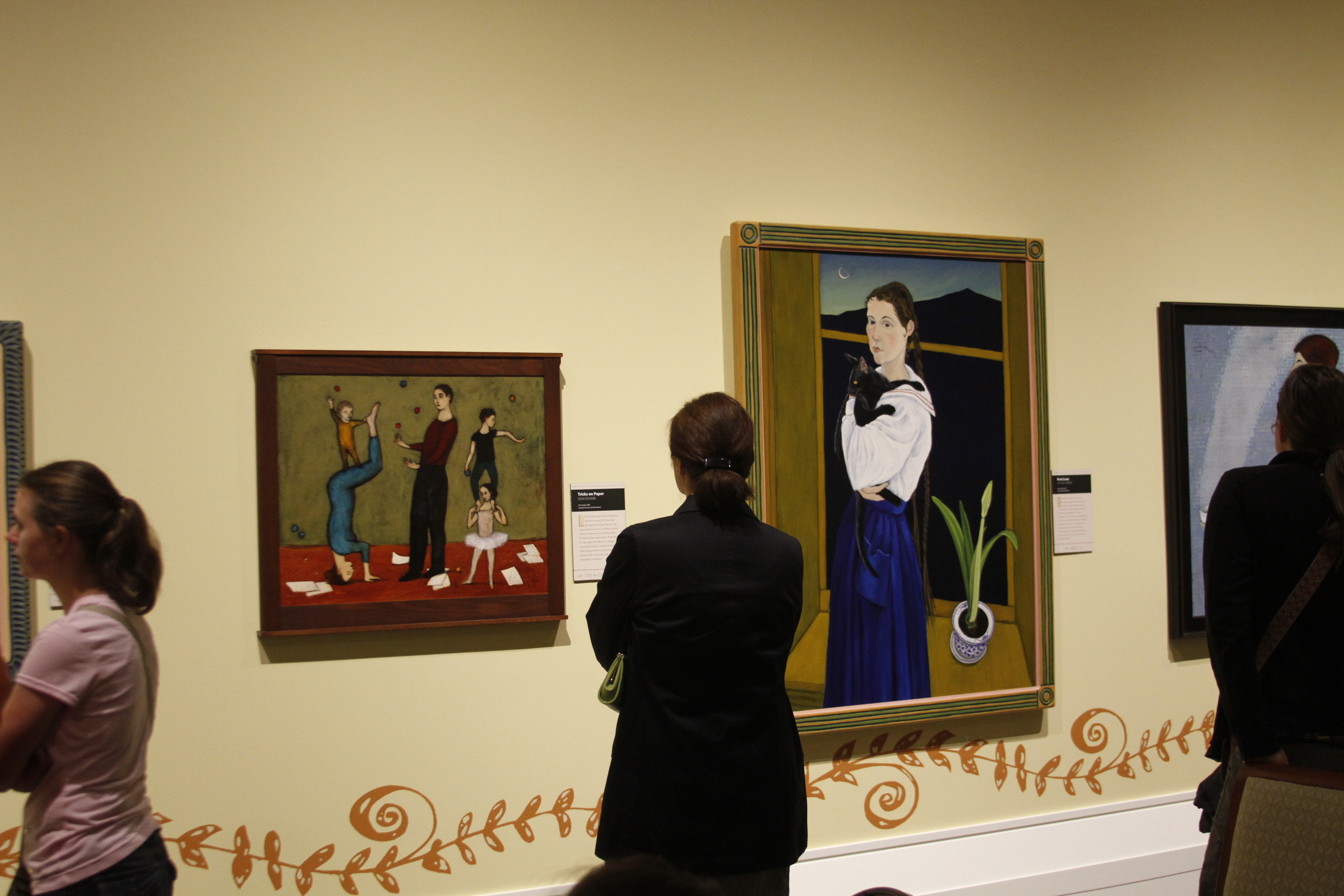
Visitors to the Church History Library look at paintings in the “Practicing Charity: Everyday Daughters of God” exhibit. Marianne Holman Prescott
Sister Bennion said that she chose to have Mary in modern clothing so that women could feel an association with her.
“She is always depicted in Bible-[era clothing], so we kind of distance ourselves from that experience,” she said. “I think it is kind of good for us to connect with her.”
For the other artists the clothing on the people in their artwork is also symbolic, with the use of music symbols and vine motifs.
“I generally use plant patterns,” said Brother Kershisnik. “[They are] richly symbolic of life and living, … and a woman is kind of a source of life for all of us.”
Each painting in the exhibit depicts in some way the divine nature and identity of women as daughters of God.
To hear more from the artists and see paintings in the exhibit visit history.ChurchofJesusChrist.org/practicingcharity.
